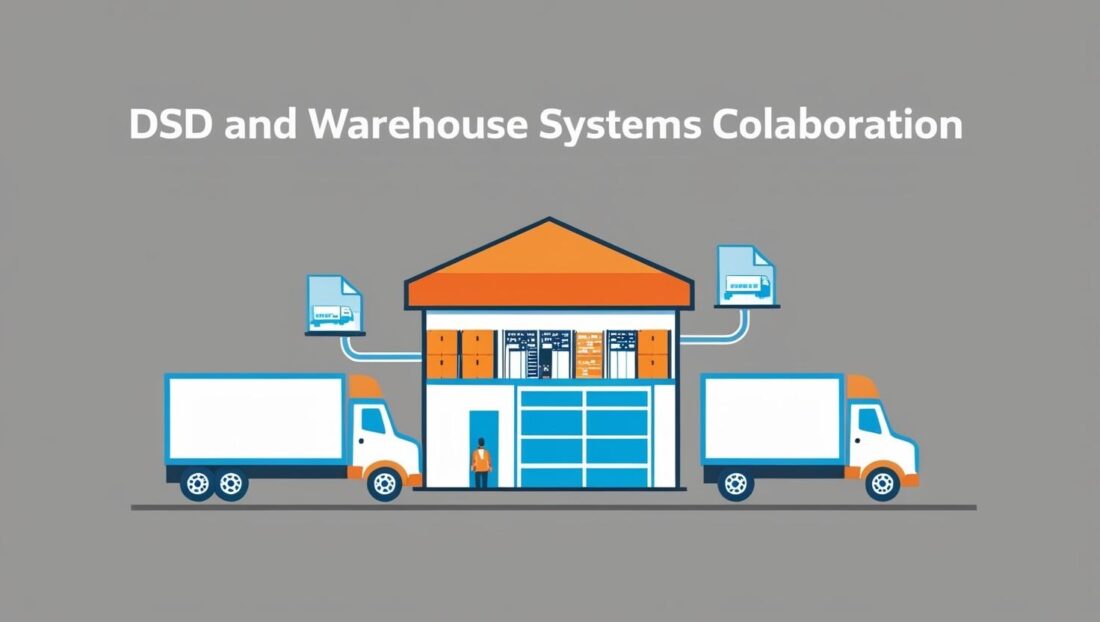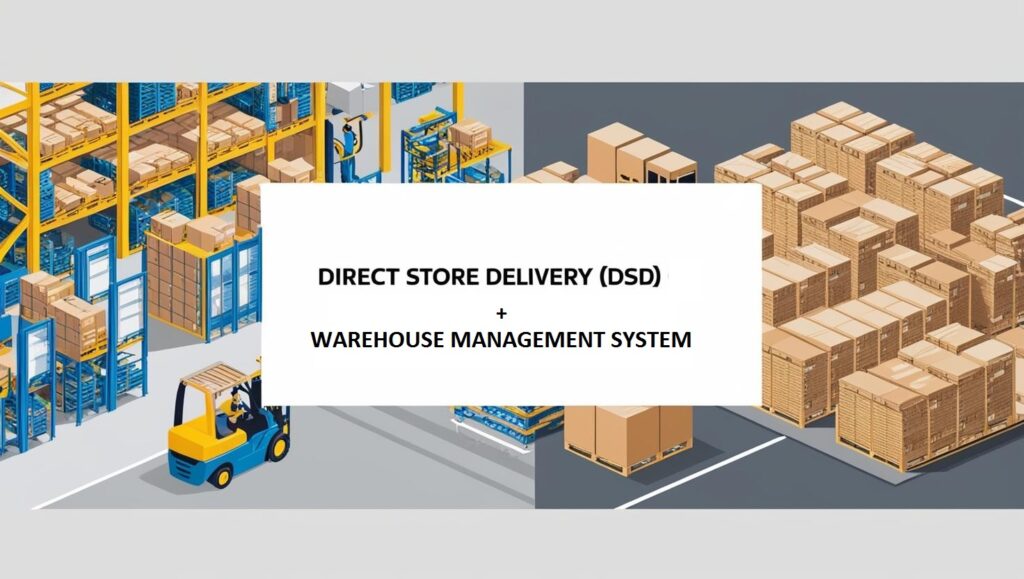
DSD and Warehouse Collaboration: Maximizing Efficiency
In today’s highly competitive and fast-paced distribution environment, the synergy between Direct Store Delivery (DSD) and warehouse operations has become crucial. Companies striving for efficiency must recognize that integrating these two aspects of the supply chain can lead to enhanced productivity, reduced costs, and improved customer satisfaction. In a recent article I explored how DSD Collaboration and Integration Improves Efficiency. In this article, I explore how collaboration between DSD and warehouse teams can unlock operational excellence.
Understanding the Roles of DSD and Warehousing
Direct Store Delivery (DSD) is a logistics strategy where products are delivered directly to retail stores, bypassing the retailer’s distribution centers. This method is common in industries like beverages, snacks, and perishable goods, where shelf availability and freshness are paramount. DSD allows for quick replenishment, direct control over inventory in stores, and immediate response to market demands.
Warehouse operations, on the other hand, are the backbone of the supply chain, managing inventory storage, order picking, packing, and shipping. Efficient warehouses ensure that DSD drivers receive the right products in the right quantities at the right time.

When these two functions operate in silos, inefficiencies such as stockouts, overstocking, and delays can occur. However, by fostering collaboration, businesses can ensure smoother operations and improved outcomes.
Benefits of Combining DSD and Warehouse Collaboration
When implemented together, DSD and warehouse collaboration can create a powerful synergy that drives efficiency and improves overall supply chain performance. Some key benefits include:
Reduced Transportation Costs: Companies can optimize delivery routes and reduce transportation costs associated with DSD by strategically locating collaborative warehouses.
Improved Inventory Management: Sharing warehouse space and resources allows for better inventory control and reduces the risk of stockouts or overstocking.
Enhanced Delivery Speed and Flexibility: Collaborative warehouses can act as staging points for DSD operations, enabling faster and more flexible deliveries to retail stores.
Increased Market Reach: Partnering with other businesses can expand DSD products’ market reach and open up new distribution channels.
Better Customer Service: Efficient DSD operations and well-managed inventory improve product availability and provide fresher goods for consumers.
Strategies for DSD and Warehouse Collaboration
Integrated Technology Systems: Employing advanced software solutions such as Warehouse Management Systems (WMS) and DSD platforms can bridge the gap between these two operations. Integration ensures real-time visibility into inventory levels, order statuses, and delivery schedules. For example, a WMS integrated with a DSD app can automate the synchronization of warehouse picking with delivery schedules, reducing wait times for drivers.
Streamlined Communication Channels: Clear and consistent communication between warehouse staff and DSD drivers is essential. Utilizing mobile apps or communication platforms can facilitate instant updates on order changes, delays, or special delivery instructions. Scheduled meetings between warehouse managers and DSD team leaders can further align goals and address challenges.
Optimized Loading and Routing: Collaborative planning of loading docks and delivery routes can significantly improve efficiency. Warehouses should prioritize staging areas for DSD trucks, enabling quicker loading. Similarly, optimizing delivery routes based on store priorities and traffic conditions can reduce fuel costs and delivery times.
Shared Performance Metrics: Establishing shared KPIs, such as on-time delivery rates, inventory accuracy, and order fulfillment speed, fosters accountability across both teams. Tracking these metrics encourages collaboration to meet shared objectives.
Cross-Training Employees: Training warehouse staff on DSD requirements and vice versa can build mutual understanding and reduce errors. For instance, warehouse employees can be trained to prioritize orders for DSD drivers, while DSD drivers can learn about warehouse workflows to provide better feedback on operational bottlenecks.
Continuous Improvement through Feedback Loops: Regular feedback sessions between DSD drivers and warehouse teams can identify recurring issues and potential areas for improvement. This feedback loop creates an environment of continuous improvement, where both teams work together to refine processes.
Real-World Examples
Some companies have successfully implemented collaborative DSD and warehouse strategies. For example, beverage distributors often synchronize their operations with integrated WMS and DSD systems. They reduce waste and improve service levels by sharing real-time inventory data and optimizing routes based on delivery windows.
Conclusion
Maximizing efficiency through DSD and warehouse collaboration requires a commitment to integration, communication, and continuous improvement. By leveraging technology, fostering teamwork, and aligning goals, businesses can achieve a seamless flow of goods from warehouse to store shelves. This strengthens the supply chain and positions companies for sustained success in a competitive marketplace. Laceup’s suite of supply chain solutions can help you navigate and integrate all supply chain processes. If you want to learn more about Laceup solutions, give us your information to schedule a meeting.
I hope this article has been helpful to you. I will continue to post information related to warehouse management, distribution practices and trends, and the economy in general. Our channel has a lot of relevant information. Check out this video about an in-depth demo of a WMS.


Sorry, the comment form is closed at this time.